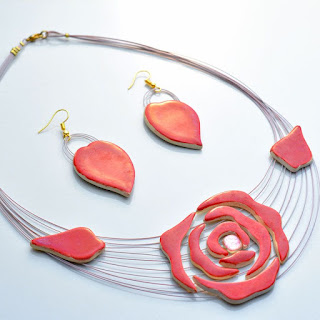The process of forming objects with clay itself or mixed with other materials like silicon and carbon, fired at high temperatures to give them a hard and durable form is known as ceramic art .It include earthenware, stoneware and porcelain.
Artists have learned to use ceramics to create the most unusual objects. In addition to decorative pots, vases and tableware, figurines and sculptures ,beads and small items found in jewellery are also made. In fact, clay and concrete-based ceramics are quite easy to form into virtually any type of shape and they can be painted with various techniques to achieve the most outstanding effects. Lately, 3D printing has been introduced as an aid for artists to experiment new forms and create prototypes in a short time.
Types of ceramic art :
Pottery :
Pottery, one of the oldest and most widespread of the decorative arts, consisting of objects made of clay and hardened with heat. The objects made are commonly useful ones, such as vessels for holding liquids or plates or bowls from which food can be served. Pottery is the ceramic material which makes up potteryware.
Major types include earthenware, stoneware and porcelain. The place where such wares are made is also called a pottery Pottery also refers to the art or craft of a potter or the making of pottery. Four main types of clay for pottery: Porcelain, earthenware, stoneware, and ball clay.
Figurines :
A figurine is a small, three-dimensional
sculpture that represents a human, deity or animal. Figurines have been made with
clay, metal, wood, glass, and plastic or
resin .
Sculptures :
Sculpture
is the art of making forms and figures in clay or other materials or a product
of such an art. Sculpture is the three-dimensional art work which
is physically presented in the dimensions of height, width and depth.The
four traditional materials for created a sculpture were stone carving, bronze casting, wood carving,
or clay firing.
Mosaics :
Mosaic is the decorative art of creating pictures and patterns on a surface by setting small coloured pieces of glass, marble or other materials in a bed of cement, plaster or adhesive. Employed as a form of interior or exterior decoration. There are really only five basic types of mosaic art: Classical, Organic, Industrial, Artisanal, and Prefabricated Custom Inserts. Most other types can fall neatly into any one of these five main types of mosaic art. Mosaic designs can be made with pretty much anything, including old, recycled, or found materials such as beads, buttons, and mirrors. The dazzling colors and distinctive aesthetic of mosaics offer an eye-catching approach to art. Mosaics are mesmerizing to look at.
Tiles :
Ceramic tiles are made from a mixture of natural clay, sand and water. This mixture is treated with fire at high temperatures to remove most of the moisture and produce a hard and durable tile. Ceramic tiles are mostly used in square or rectangular shapes and are available in various sizes and colours. They are easy to install and very durable options. Ceramic tiles are available in glazed or unglazed finish and are extremely durable and gorgeous. Ceramic tiles are perhaps the only flooring material that truly work for any room of the house, be it the living room, bedroom, bathroom or kitchen. They are also as good for commercial spaces as for residential. They are most often used as kitchen and bathroom wall tiles. Ceramic tiles are available in a large range of designs, colours, patterns and textures.
Jewellery:
Artists of ceramic Art :
Brahmdeo Ram Pandit is an famous indian known for his expertise in making pottery. He was honoured by the Government of India, in 2013, by bestowing on him the Padma Shri, the fourth highest civilian award, for his contributions to the field of art .He is known as father of pottery. Along with him there are so many famous artists who contribute their life towards ceramic art ,they also have their own studios . some of them are Tanushree Singh , Srishti Sindhu , Neha Jainabadkar ,Neeraj Kapadia ,Kritika Soni ,Rekha Goyal , Tejashree Sagvekar , Nikita Dawar , Manu Randhawa, Thomas Louis.








thank u so much..
ReplyDelete